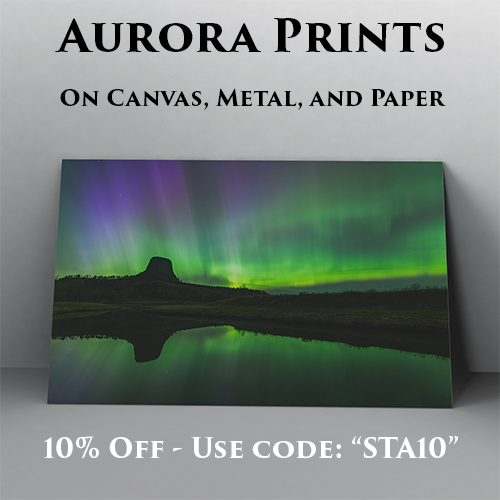Before learning how to see the aurora, first it helps to know where they come from. To understand what causes the aurora first you must know a bit about the sun.
The Sun
The sun hangs in space 150 million kilometers away from Earth. A ball of hot plasma 1.4 million kilometers wide, it’s internal convective currents generate a magnetic field. It rotates on it’s axis about once every 27 days. But the equatorial region of the sun rotates faster, while the poles rotate slower. It is this differential rotation that winds up and twists the internal magnetic field into complex loops. These loops emerge above the surface of the sun (the photosphere) as sunspots. Sunspots are easy to observe with either an inexpensive solar filter or by projecting them onto a surface.
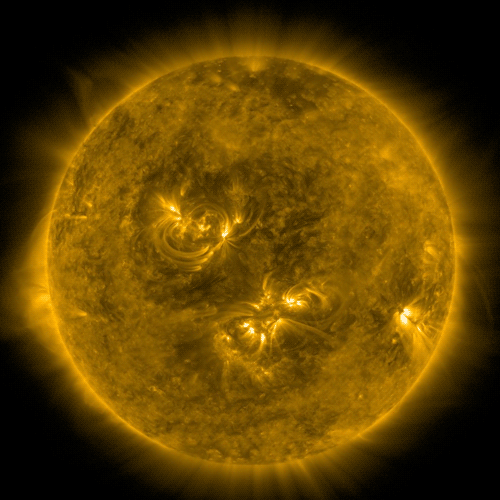
The outer atmosphere of the sun is known as the corona. It extends millions of kilometers into space. For reasons scientists do not understand, the corona is about 450 times hotter than the surface of the sun. But the corona is also about 10 million times less dense than the sun’s surface. For this reason, the corona is very dim. The only way it can be seen is with specialized equipment, with one exception. During a total solar eclipse, while the moon is covering the entire face of the sun, the corona becomes visible. From the outer edge of the corona, the solar wind emerges. the speed of the solar wind can vary from 250 – 800+ kilometers per second. This solar wind carries with it plasma, charged particles such as electrons and protons. Also carried in the solar wind is the interplanetary magnetic field (IMF). Because of the sun’s rotation, the IMF has a spiral shape.
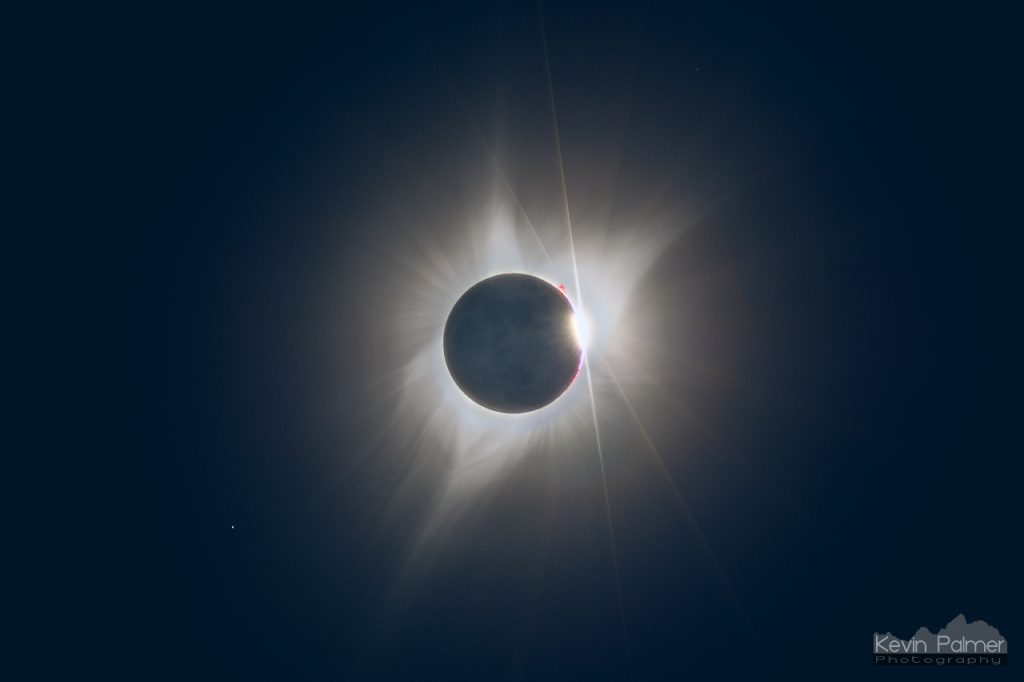
Magnetosphere
The Earth has a magnetic field as well which is known as the magnetosphere. The magnetosphere deflects the majority of the solar wind as well as cosmic rays. If it didn’t then our atmosphere would be stripped away, and Earth could no longer support life. But some of the charged particles do make it into the magnetosphere. Near the poles the magnetic field lines dip towards the Earth’s surface. As a result the particles are concentrated there, where they reach the atmosphere. These charged particles then collide with atoms in the upper atmosphere, which “excites” them and causes them to emit photons. This reaction is what we see as the aurora, and the color depends on the type of gas that’s being excited. High altitude (300km) oxygen will glow a deep red, lower altitude (100-300km) oxygen is the most common and will glow green, while lower altitude nitrogen glows purple or blue.
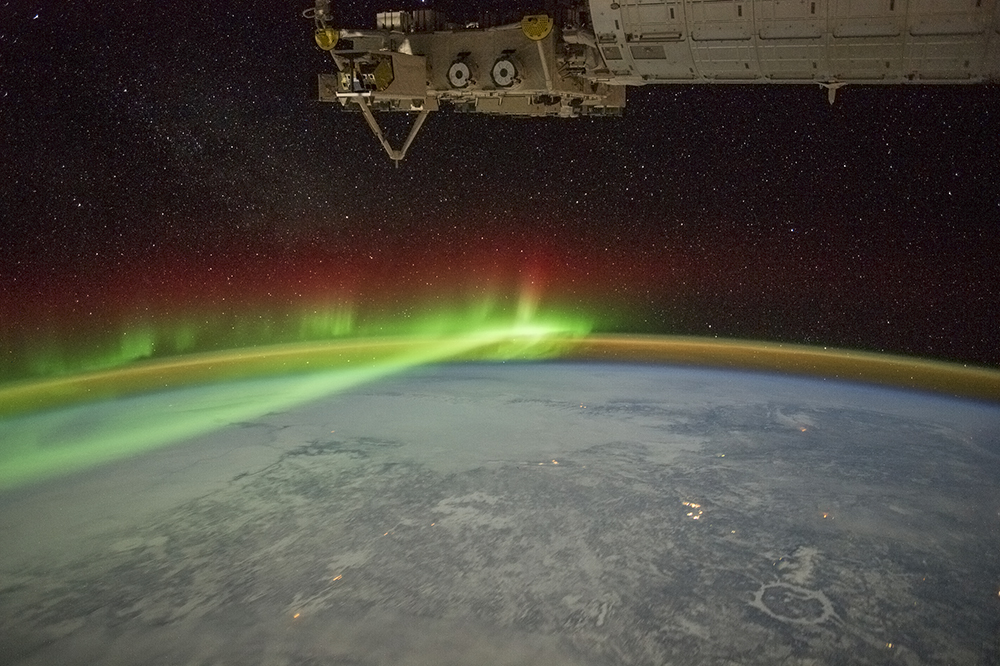
The aurora spreads out into a ring around Earth’s poles in what is known as the auroral oval. The auroral oval is always there and locations underneath it can see the aurora on almost any clear night. But for the auroral oval to expand towards the mid-latitudes, there needs to be a geomagnetic storm. A geomagnetic storm is a major disturbance of Earth’s magnetosphere which may last anywhere from a few hours to several days.
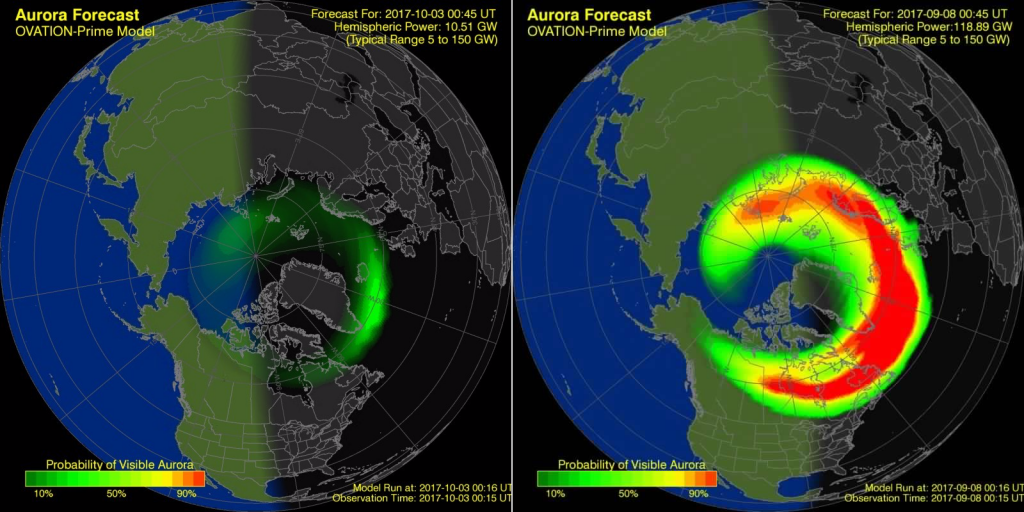
So what causes a geomagnetic storm? Now we have to go back to the sun. At the beginning of this article I mentioned sunspots, areas of intense magnetic activity on the surface of the sun. When sunspots become unstable, they may erupt. This sudden release of energy is known as a solar flare. X-ray radiation is emitted at the speed of light, reaching Earth about 8 minutes later. This X-ray radiation can disrupt shortwave radio communications, damage satellites, and poses a risk to astronauts. But this immediate radiation is not what causes a geomagnetic storm.
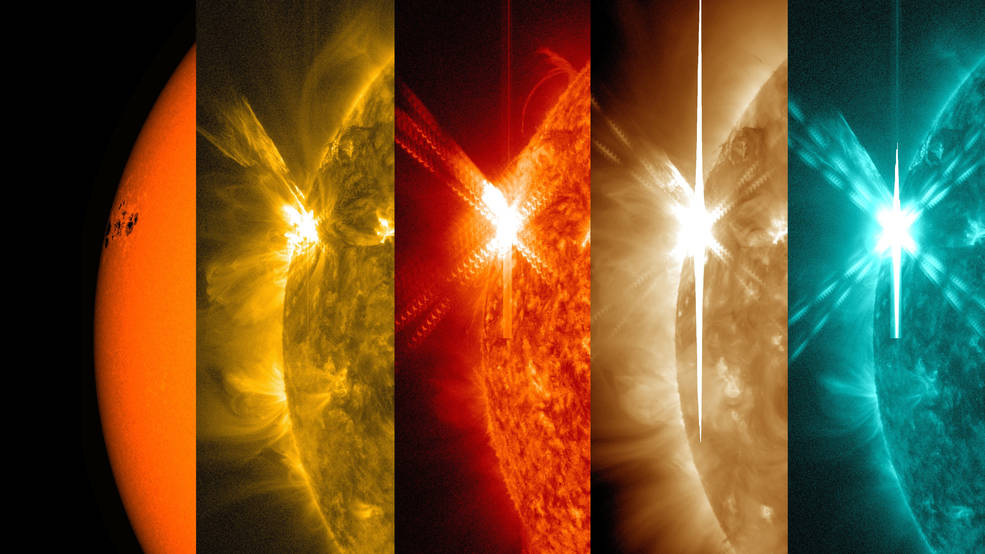
Causes of Geomagnetic Storms
A solar flare may trigger a coronal mass ejection (CME), but it doesn’t always. A CME is a massive explosion on the sun which sends out an immense cloud of plasma. But the majority of CME’s are not directed towards Earth. CME’s which originate from the center of the solar disk are more likely to be headed our way. It takes between 1 and 4 days for a CME to impact the magnetosphere. The timing can vary depending on the size and speed of the CME, as well as by variations in the density of the IMF ahead of it. When the CME impacts the magnetosphere, a geomagnetic storm is likely. The storm will be much stronger if the magnetic field embedded in the CME is oriented southward (negative Bz). It is the job of the NOAA Space Weather Prediction Center (SWPC) to forecast these events. CME’s are rather unpredictable and once they occur it is often difficult to forecast if or when they will reach earth.
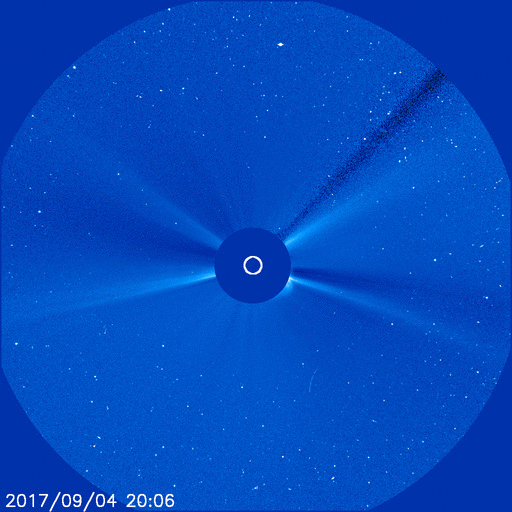
There is another cause of geomagnetic storms: a coronal hole. Coronal holes are large areas of the sun’s atmosphere where the magnetic fields have opened up and allowed a high-speed solar wind to stream into space. When Earth passes into this solar wind stream, it may cause a geomagnetic storm. Again, the impact will be greater if the embedded magnetic field is oriented southward (negative Bz). Coronal holes have been known to persist for months at a time, moving with the rotation of the sun. This generally makes them more predictable than CME’s.
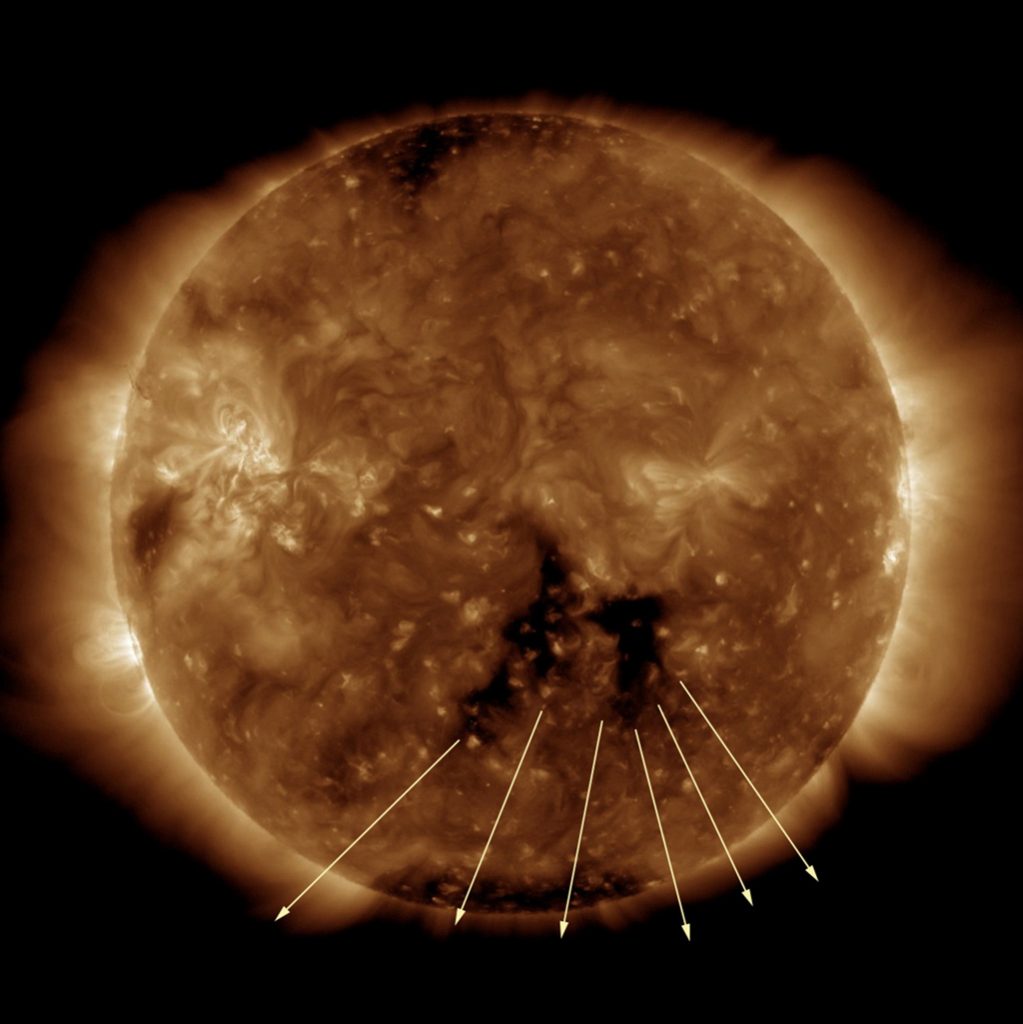
The Solar Cycle
The total number of sunspots has long been known to vary with an 11-year period known as the solar cycle. The peak of the solar cycle is known as solar maximum and the valley of the cycle is known as solar minimum. During solar maximum sunspots, flares, and CME’s are all more common. During solar minimum coronal holes are the primary drivers of space weather. We are currently heading towards solar minimum which is expected sometime in 2019. Solar maximum will occur 4-6 years after that.

Next: How to See the Aurora
